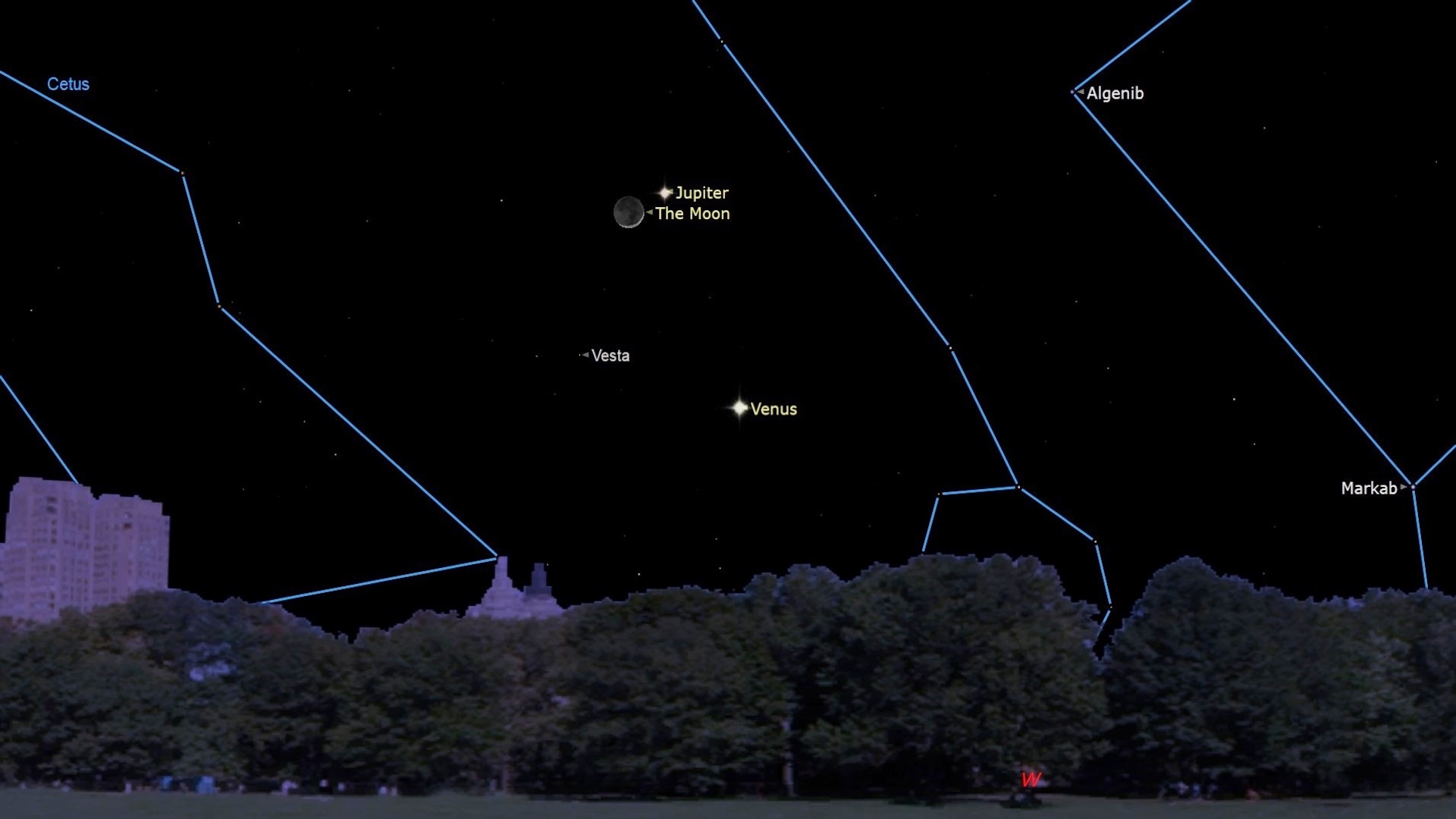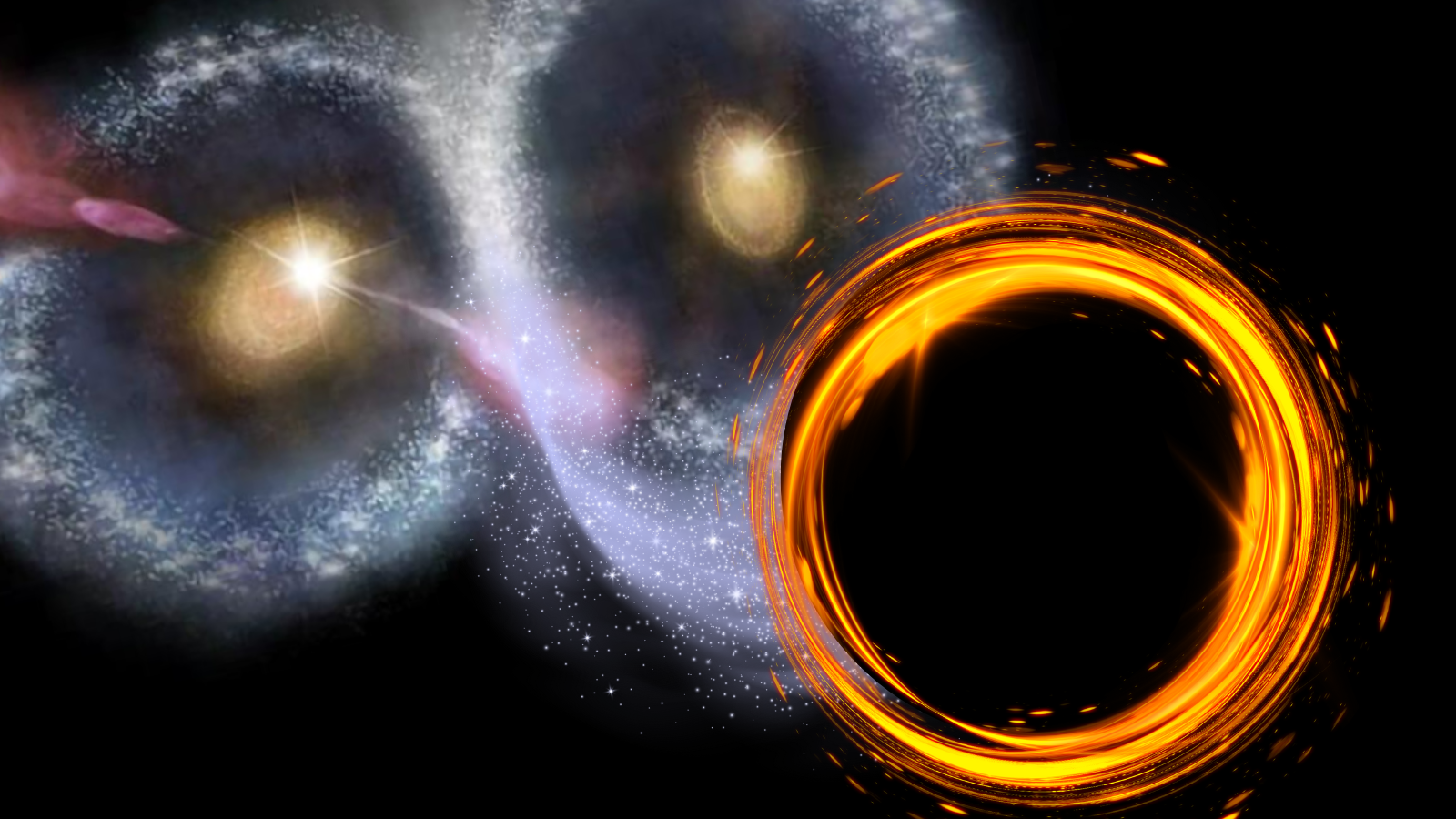See the moon and Venus dance together in Wednesday evening's sky
The moon and Venus will practically meet in the night sky on Wednesday.

As far as celestial objects in the night sky go, the moon is by far the brightest, with Venus coming in a distant second. On Wednesday (Feb. 22), you'll be able to spot the two making a close approach.
That approach, technically called an appulse, will be visible Wednesday from New York between 7:52 a.m. EST (1252 GMT) and 7:59 p.m. EST (0059 GMT on Feb. 23), according to skywatching site In-the-Sky.org. Of course, the majority of that period is during daylight hours, which will make observing the appulse a little tricky. But since the sun sets at 5:38 p.m. EST (2238 GMT) in New York City, that gives you a few hours in the evening for solid viewing.
At the same time as the appulse, the moon and Venus will also reach conjunction, which happens when they share the same right ascension (basically, a celestial body's "east-west" position in the sky).
Related: Night sky, February 2023: What you can see tonight

Looking for a telescope to see the night sky during new moons? We recommend the Celestron Astro Fi 102 as the top pick in our best beginner's telescope guide.
The moon will be just two days old — an extremely thin crescent moon — but it will still appear at magnitude minus 9.7 in terms of brightness. Venus, on the other hand, will be at magnitude minus 4.0. Venus is so bright thanks to its thick, cloud-filled atmosphere that reflects much of the sunlight that reaches it. (On the magnitude scale used by astronomers, lower numbers indicate brighter objects.)
Jupiter is the next brightest celestial body in the night sky, and on Wednesday, it will be at magnitude minus 2.12. The planet will also be near the moon — in fact, the moon will be sandwiched between Jupiter and Venus. (On March 1, the two planets will make their closest approach.)
If you want to get an up-close look at the moon and Venus during their conjunction and appulse — plus a view of nearby Jupiter — our guide to the best binoculars is a great place to start. And though you won't be able to see both the moon and Venus within the field of view of a telescope, you can still get excellent views of each individually — take a peek at our guide to the best telescopes.
Breaking space news, the latest updates on rocket launches, skywatching events and more!
And if you're looking to photograph the celestial event, gear up with our guides to the best cameras for astrophotography and the best lenses for astrophotography, then check out our guide on how to photograph the moon,
Editor's Note: If you snap the conjunction of the moon and Venus and would like to share it with Space.com's readers, send your photo(s), comments, and your name and location to spacephotos@space.com.
Follow Stefanie Waldek on Twitter @StefanieWaldek. Follow us on Twitter @Spacedotcom and on Facebook.

Space.com contributing writer Stefanie Waldek is a self-taught space nerd and aviation geek who is passionate about all things spaceflight and astronomy. With a background in travel and design journalism, as well as a Bachelor of Arts degree from New York University, she specializes in the budding space tourism industry and Earth-based astrotourism. In her free time, you can find her watching rocket launches or looking up at the stars, wondering what is out there. Learn more about her work at www.stefaniewaldek.com.
